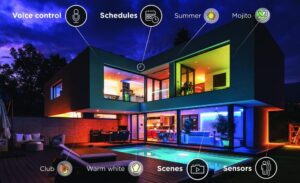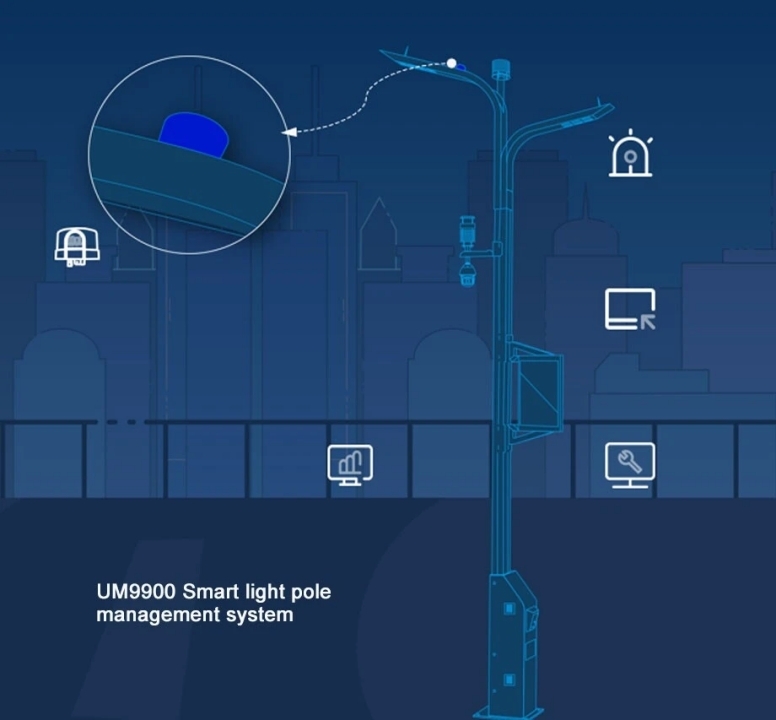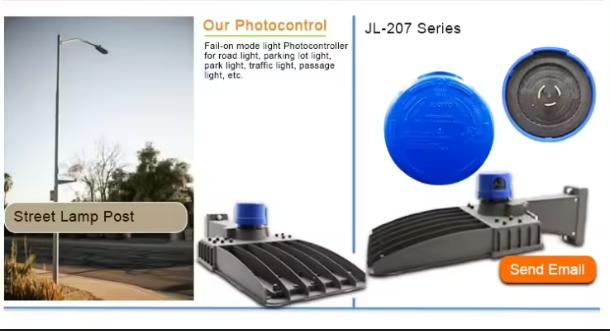Describir
- Introducción
- How Do You Meet Specific Lighting Needs with Precision Control?
- How Can You Optimize Energy Efficiency and Minimize Light Pollution?
- Why Is Customization Essential for Different Lighting Projects?
- How Do Different Environments Affect Fotosensor Light-Level Settings?
- Palabras finales
Need lights to turn on earlier when it gets dim?
Many customers do. Standard sensores de luz sometimes wait too long. This guide explains how to meet those demands with low light-level settings. By setting the control de iluminación to activate at 7 lux, you can ensure lights turn on at the right moment. This improves visibility and reduces wasted energy. Let’s explore further how fine-tuning your photocell settings makes a big difference.
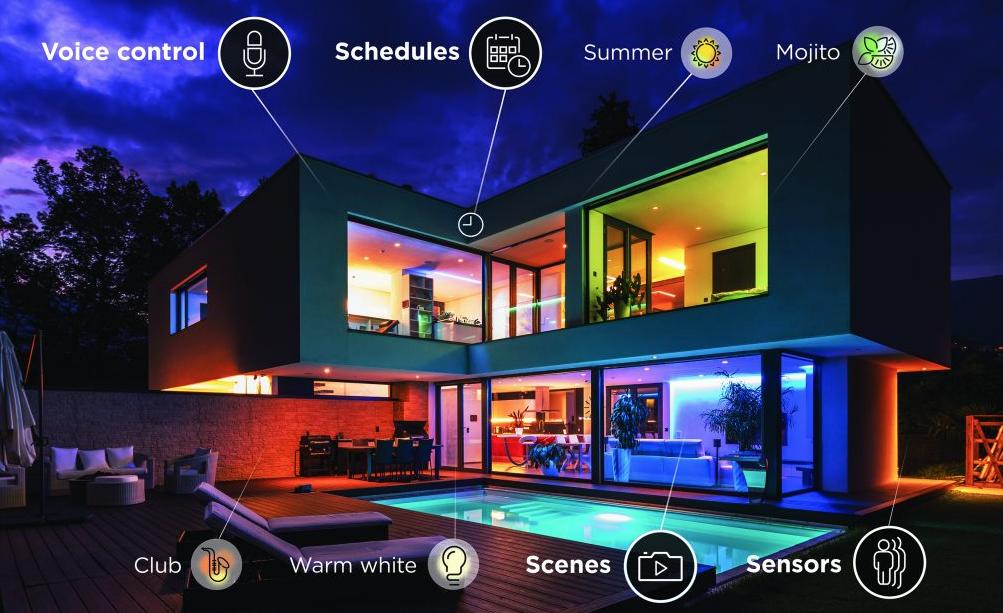
Imagen cortesía de: Electricway
How Do You Meet Specific Lighting Needs with Precision Control?
Different environments demand different fotocontrol responses. Whether in cities or remote zones, tuning the light activation level to 7 lux helps meet both functional and safety-related lighting goals with greater precision.
Automatic Control in Low Light Conditions
Urban areas often experience fluctuating light due to multiple reasons. This could be due to
- Shadows from buildings
- Tree canopies
- Narrow streets
Outdoor photocell switches set at a 7 lujo threshold help streetlights activate before visibility becomes a problem. Modern receptáculos de fotocontrol, using CdS cells or phototransistors, actively monitor ambient light and switch lights immediately when that low threshold is reached.
Newer models with delay features and dusk-tracking sensors prevent flickering caused by passing car headlights or brief light bursts.
Special Application Scenarios
In critical environments like industrial yards, truck depots, rural substations, or oil refineries, waiting for total darkness is risky.
Interruptores de fotocélula con sensor de luz configured to turn on at 7 lux ensure workers’ wellness. Here is how it benefits specific installations.
- Workers can move safely across the site during twilight or poor weather.
- Early-response systems are especially vital where machine operation continues beyond daylight hours.
- Some customers in the mining and logistics sectors have reported that installing low-lux photocells reduces fall injuries and vehicle collisions during shift changes or dawn operations
- In military zones and correctional facilities, lighting activates earlier around security perimeters, eliminating gaps in visibility.
With low-lux triggers, these systems operate proactively rather than reactively, keeping assets, staff, and operations safe. For further details, below is a table outlining different light level requirements in different use case scenarios.
| Área de aplicación | Recommended Turn-On Lux | Reason for Low-Lux Activation |
| Industrial Yards | 7–10 lux | Ensure early lighting for safety around heavy machinery |
| Remote Utility Stations | 5–7 lux | Maintain visibility in areas without ambient lighting |
| Public Parks & Greenbelts | 7 lux | Early activation prevents accidents during twilight |
| Alleyways & Side Streets | 6–8 lux | Low traffic but high risk; early lighting is vital |
How Can You Optimize Energy Efficiency and Minimize Light Pollution?
Sustainable outdoor lighting is an important concern now a day. While cutting energy costs is the main driver, light pollution-led environmental degradation is also a serious concern. Excess light can:
- Leads to ecological imbalance
- Causes visual pollution
- Disturb circadian rhythms
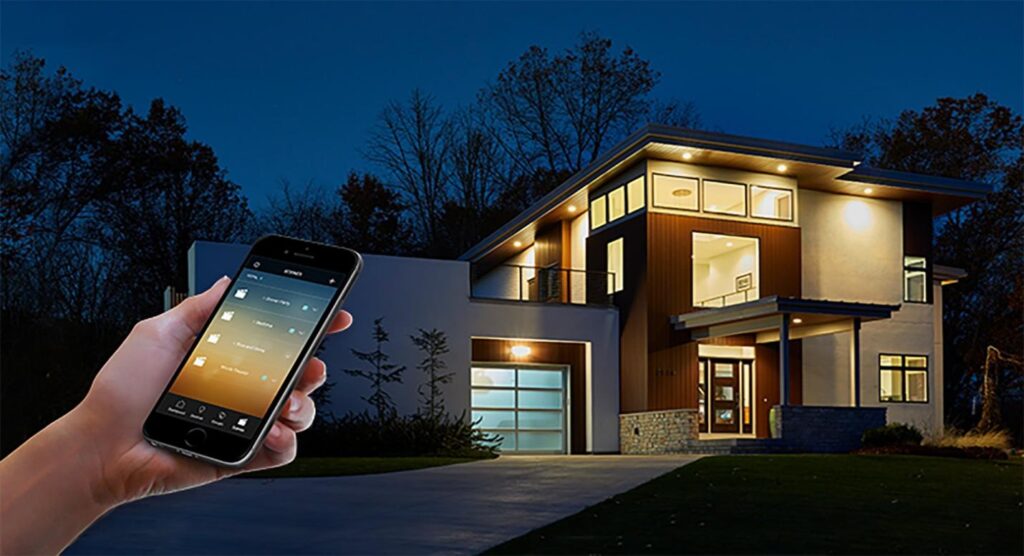
Imagen cortesía de: Electrical Contractor
Enhancing Energy Efficiency and Reducing Waste
The more the lights are on, the more power they will consume. Setting the threshold at 7 lux maximizes the use of natural daylight.
According to the US Department of Energy, smart controles de iluminación can cut energy use by up to 60%. Pairing these with optimized photocell sensors amplifies the effect.
Silicon photodiodes help achieve accurate lux-based switching. They avoid issues like temperature drift, which boosts long-term reliability and lowers maintenance needs. Here is a table showing potential energy savings based on receptáculo de fotocontrol activation threshold.
| Turn-On Lux Level | Avg. Annual Energy Use (per lamp) | Estimated Savings vs. 15 Lux Setting | Ideal Use Case |
| 15 lux | 425 kWh | 0% | High-crime zones |
| 10 lux | 380 kWh | 10% | General municipal lighting |
| 7 lux | 345 kWh | 19% | Eco-friendly and low-traffic areas |
| 5 lux | 310 kWh | 27% | Private or remote access lighting |
Estudios de caso
Cities such as Chicago and Los Ángeles use low-lux settings and motion control. These measures have cut energy bills and prolonged fixture life.
Some areas adjust lux thresholds seasonally. Like in summer, longer twilight allows lights to stay off longer, adding more savings.
Reducing Light Pollution and Protecting the Environment
Lower lux settings reduce how long lights stay on. This helps protect ecosystems from artificial light.
Excessive lighting disrupts sleep in people and harms wildlife. Research from the International Dark-Sky Association links light pollution to insect deaths and confused bird migration.
Countering Light pollution
Using a 7 lux ON and 10 lux OFF range cuts down skyglow. This is vital in light-sensitive zones like parks, coasts, and observatories.
Many cities now require fotocélulas that follow these light curfew rules. They must also work with shielded fixtures to limit upward spills.
Pairing low-lux sensores de luz automáticos with warm-white LEDs enhances environmental safety. These tones also reduce melatonin suppression and cut glare.
In strict regions like California or the EU, such measures may qualify for energy credits or LEED certification.
Why Is Customization Essential for Different Lighting Projects?
Smart lighting demands precise fits. Clients in smart-city or industrial deployments often need photocells customized for unique conditions. This could be due to various reasons as discussed below.
Sensitivity and Operating Range
Adjustable photocells let installers set lux thresholds that match local light patterns. For example, LongJoin’s photocells allow setting turn-on levels between ~10–16 lux and include contactor-compatible outputs for large installations.
Some units even allow hardware or software calibration to avoid temperature drift over time. This flexibility ensures lighting stays responsive, reliable, and maintenance-free throughout seasons.
Geographic and Environmental Factors
Customers in high-altitude or northern regions face unique lighting conditions. Longer twilight hours and stronger UV exposure affect how sensors should respond. IoT-enabled sensors make this even smarter.
As highlighted in MDPI research, they combine real-time lux readings with daylight and weather API data. This allows automatic, dynamic threshold adjustment based on actual site conditions.
Project-Specific Adjustment & Integration
Smart Port fotocélulas de control de luz, for instance, offer plug-and-play connectors that let users manually dial changes on-site for different projects or seasons.
For large-scale deployments, integrating photocell data into centralized lighting networks supports remote monitoring and threshold updates without field visits. Here is a table explaining different custom photocell settings based on regional and functional needs.
| Region / Use Case | Turn-On Lux | Turn-Off Lux | Special Setting Feature |
| Northern Europe | 7 lux | 15 lux | Snowlight compensation |
| Equatorial Urban Centers | 6 lux | 12 lux | UV-filtered detection to prevent false triggers |
| Mountainous or Foggy Regions | 5 lux | 10 lux | Humidity-sensitive sensor adjustment |
| High-Crime Urban Zones | 10 lux | 20 lux | Faster response and longer illumination |
How Do Different Environments Affect Fotosensor Light-Level Settings?

Geographic Variations in Light Levels
Regions near the poles have long twilight in summer and extended darkness in winter. Light sensor photocells switches set at 7 lux can be tuned higher or lower based on season and latitude.
Satellite studies show night-time brightness changes due to vegetation and snow. These changes can affect ground-level lux by up to 40%. By matching photocell settings to local daylight patterns, cities ensure proper activation.
Weather Conditions and Their Impact on Light Levels
Clouds and rain lower the ambient light fast. This drop often mimics dusk, confusing basic sensors. Smart sensors use cloud-detection data to adjust thresholds in real time. This keeps the lights on in dark weather and off in bright skies. It also improves safety and cuts unnecessary power use.
Further, here is a table showing weather-triggered lux drop and recommended photocell response.
| Condiciones climáticas | Lux Drop Compared to Clear Day | Required Photocell Sensitivity | Recommended Turn-On Lux |
| Heavy Cloud Cover | 60–70% | Medio | 7–8 lux |
| Rainfall | 40–60% | Alto | 6–7 lux |
| Fog / Mist | 70–85% | Muy alto | 5–6 lux |
| Dust Storms | 55–65% | Medium-High | 6–7 lux |
Palabras finales
Meeting low light-level demands isn’t just about turning lights on early—it’s about smarter, safer, and more efficient control. Photocells set to 7 lux help achieve this balance with precision. For dependable, high-performance solutions, Chi-Swear offers customizable photocells trusted by lighting professionals worldwide.

